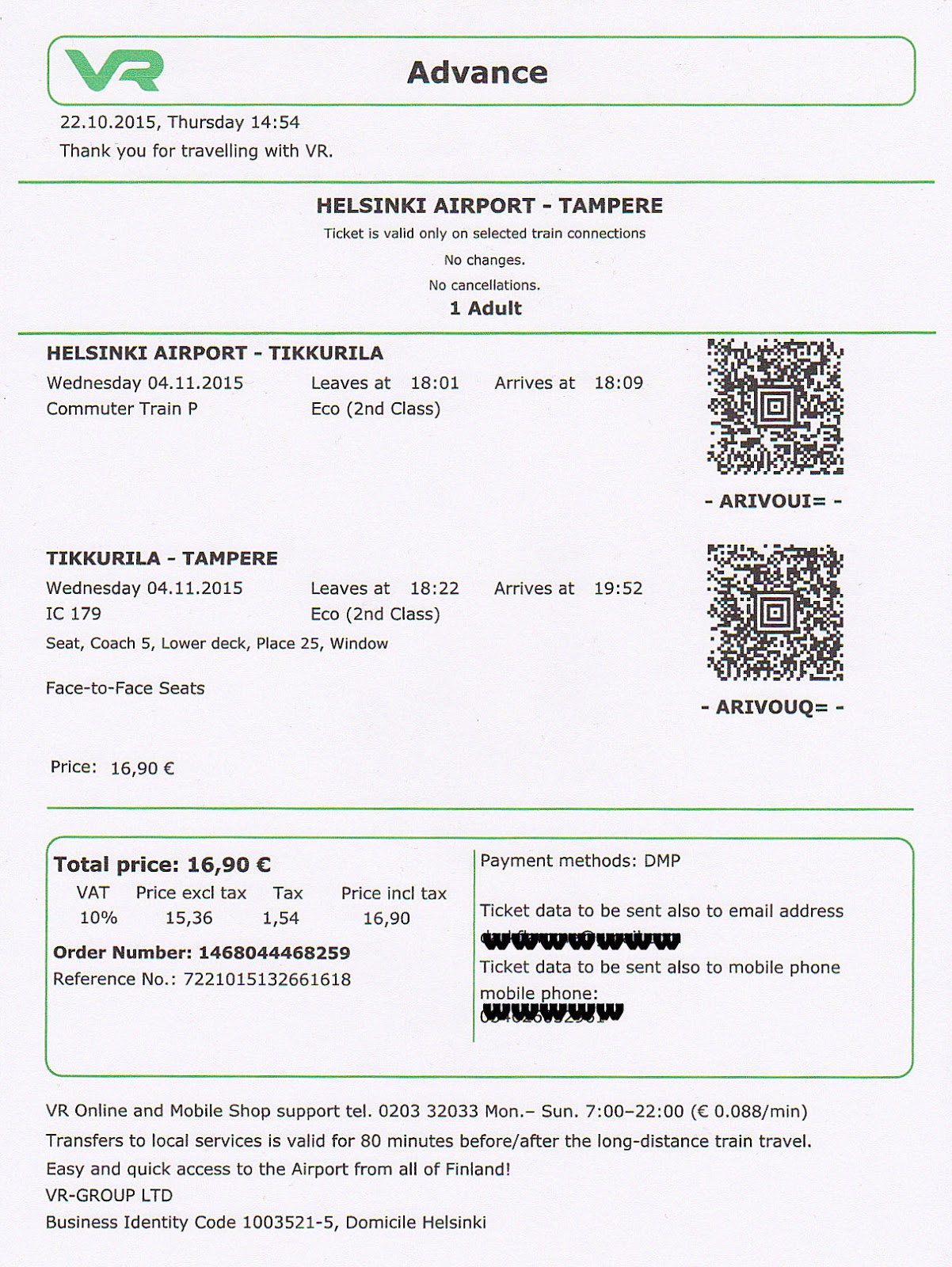Ultimate Guide to Finnish trains
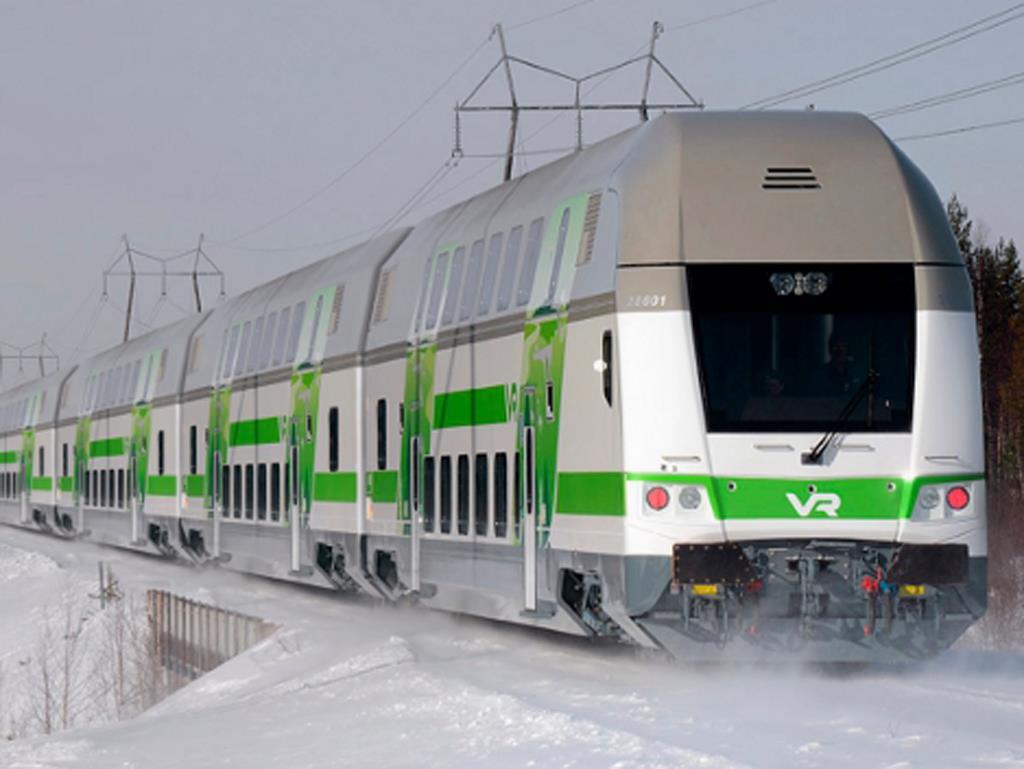
Finland may even be somewhat hidden in the northernmost part of Europe, but it should still be included in the European railway network. The train is an easy, convenient and environmentally friendly way to get around Finland and explore the whole country and even further afield.
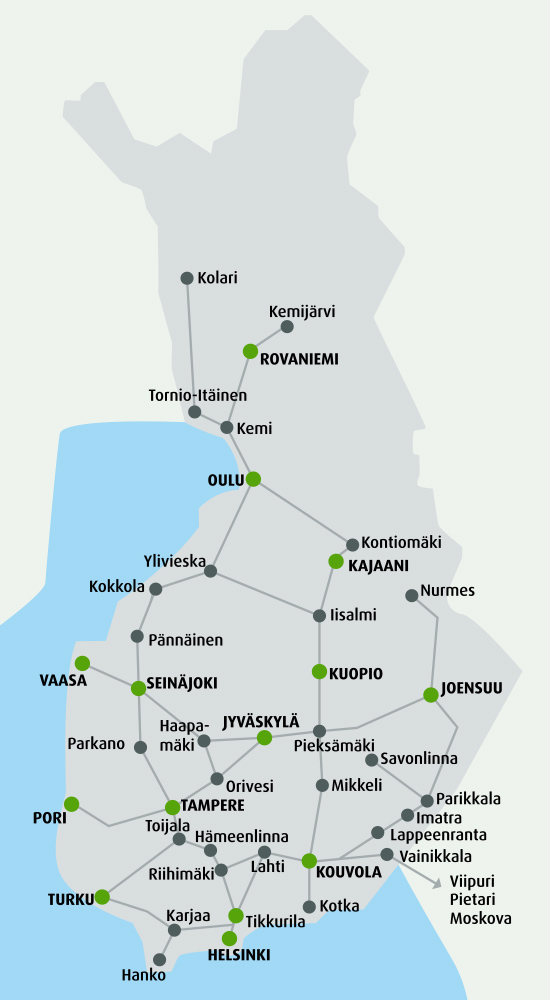
Every major town and city in Finland, including Helsinki, Turku, Tampere and Rovaniemi, are connected by the train network, so as long as you hold the train card, you can reach all the sights and enjoy them. Even some smaller towns and villages have train stations or are easily reached by other means of transportation. Some larger long-distance trains also have carriages and sleeper carriages, so you can continue the tour after the train journey.
Much of the country is covered by huge lakes, which does mean it will take some time to reach between the stations. But this only gives you more time to gaze out of the window and admire the stunning Finnish scenery from a comfortable seat. It's best in summer, where the days are longer and you can see more, but in shorter winter days, the snow-covered countryside is also beautiful.
Railway Operator
The Finnish national railway company is called VR (VR Ltd-VR Oy). The Finnish trains are very cute. They are mainly painted in small and fresh green and white. There are cute big-eyed owl and bear illustrations on the car. If you book a sleeper car, you will also find them on your pillow~ And taking a long-distance train in Finland will make you forget the shadow of taking a green train in China~ Even with hard seats, there are very few people and seats Very comfortable.
Model
Allegro (AE)
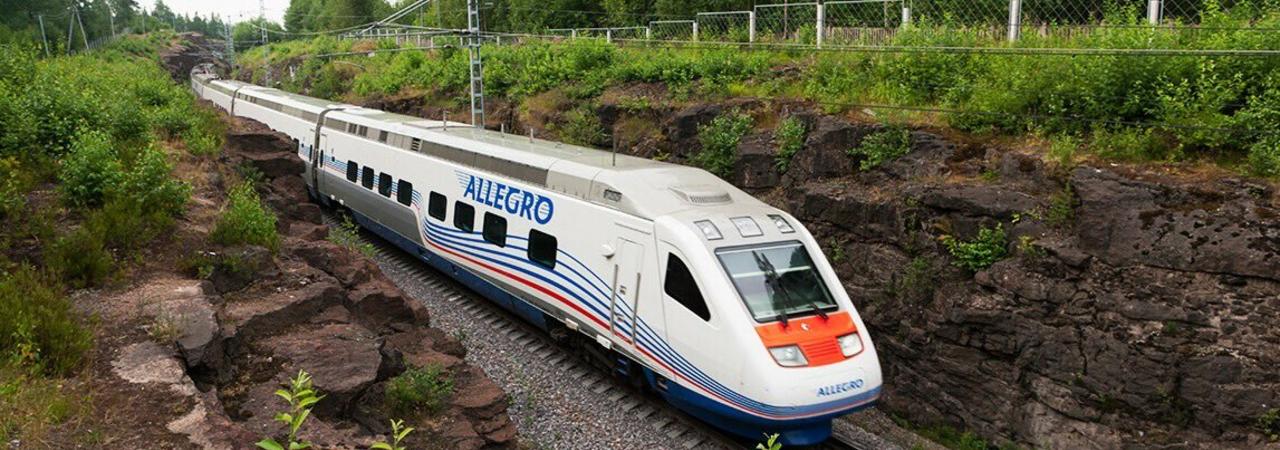
On December 12, 2010, a high-speed train line Allegro was opened between Russia and Finland. Allegro is Italian, meaning "fast". Allegro is manufactured by Alstom in France and will be responsible for the transportation between St. Petersburg and Helsinki. The running time is 3.5 hours, compared with 6 hours and 18 minutes before. The operating speed of the new trains is 200 kilometers per hour in Russia and 220 kilometers per hour in Finland.
The train stops at Vyborg in Russia and Vainikkala, Kouvola, Lahti, Tikkurila and Pasilo in Finland.
There are two trains a day, but since the summer of 2011, the daily trains have increased to four.
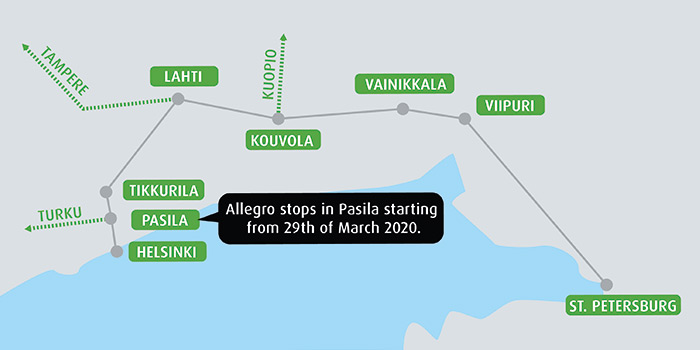
Running time: St. Petersburg-Helsinki 3 hours 30 minutes
Allegro trains are run by Pendolino trains. First class and second class
- The second-class seats are arranged in a row in an open arrangement, with four in each row (2 + 2 seats), most seats are arranged in a row, only some seats are opposite to each other
- First-class seats are arranged in a row, with three in each row (2 + 1 seats), and the seat spacing is larger. Including newspapers and snacks, and free coffee, tea and water
- air conditioning
- Power outlet
- Dedicated carriages for the disabled, families and children, and passengers with pets-
- The restaurant car is in Car 3, where you can buy snacks, drinks and hot dishes
- Allegro service prohibits bringing bicycles
- There is a children's playground in car 7
High-speed tilting train (Pendolino)
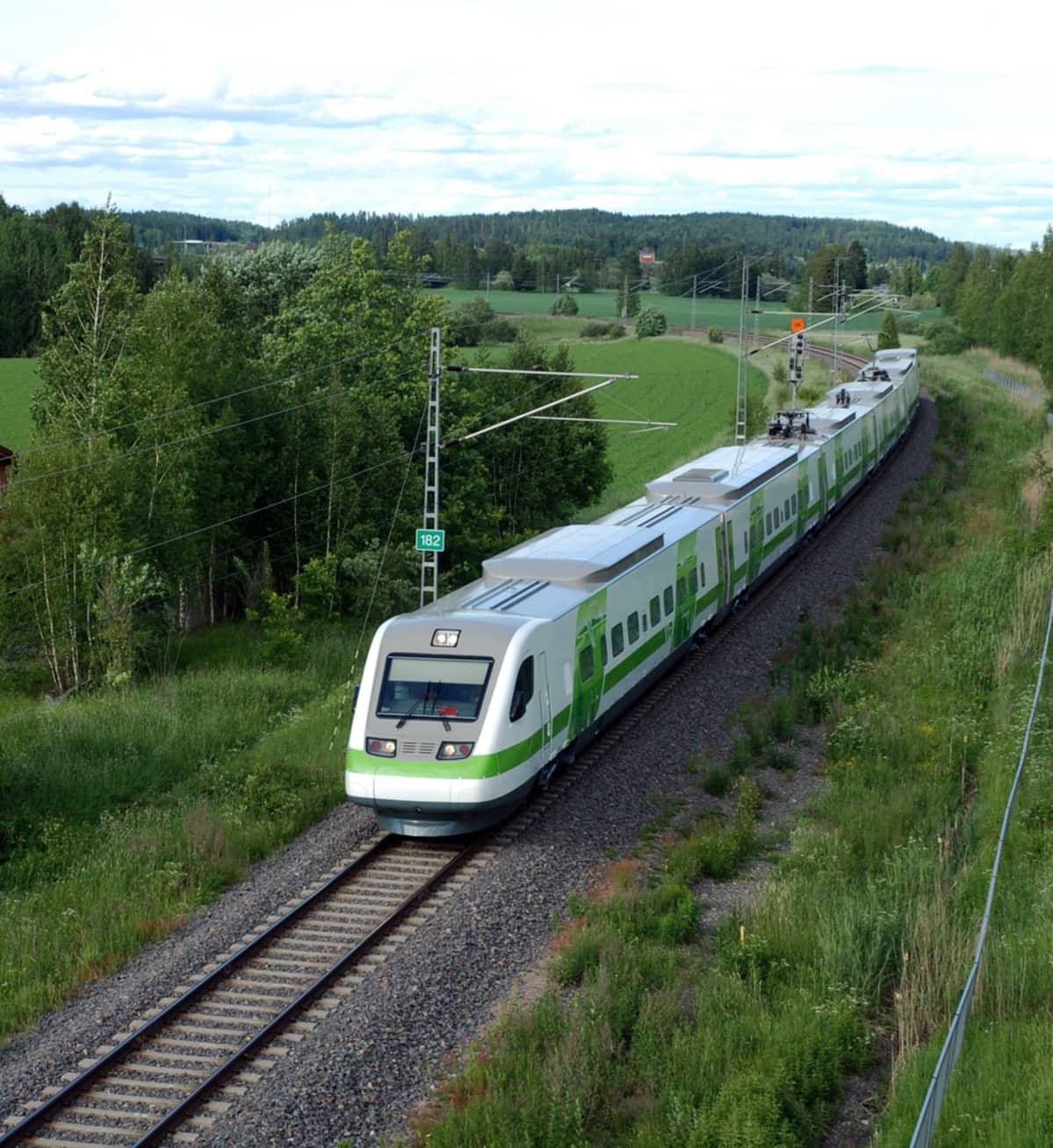
Pendolino is the high-speed tilting train that provides the fastest service in Finland. They connect Helsinki with most other major cities in the country. With their tilt mechanism, they can run faster than conventional IC trains.
- Second class ("Eco" and first class ("Extra") seats on all trains
- In the Eco cabin, the seats are arranged in rows according to the open arrangement, each row of four (2 + 2 seats), most seats are in rows, only some seats are opposite to each other
- In the Extra cabin, the seats are arranged in three rows (2+1 seats) with a larger seat pitch. Free newspaper, coffee, tea and water
- air conditioning
- Power outlet
- wireless online
- Cars for the disabled, families and children, and passengers with pets
- Cannot bring bicycles
- All trains carry dining cars, where you can buy snacks, drinks and hot dishes.

Intercity train (InterCity, IC)

Intercity trains are the backbone of long-distance travel in Finland. They operate on major routes, connecting the capital Helsinki with all parts of the country.
Most IC trains are composed of modern double-decker coaches with comfortable seats, spacious space and different facilities. On some routes, you will also find older but refurbished single-deck trains that run with double-deck trains.
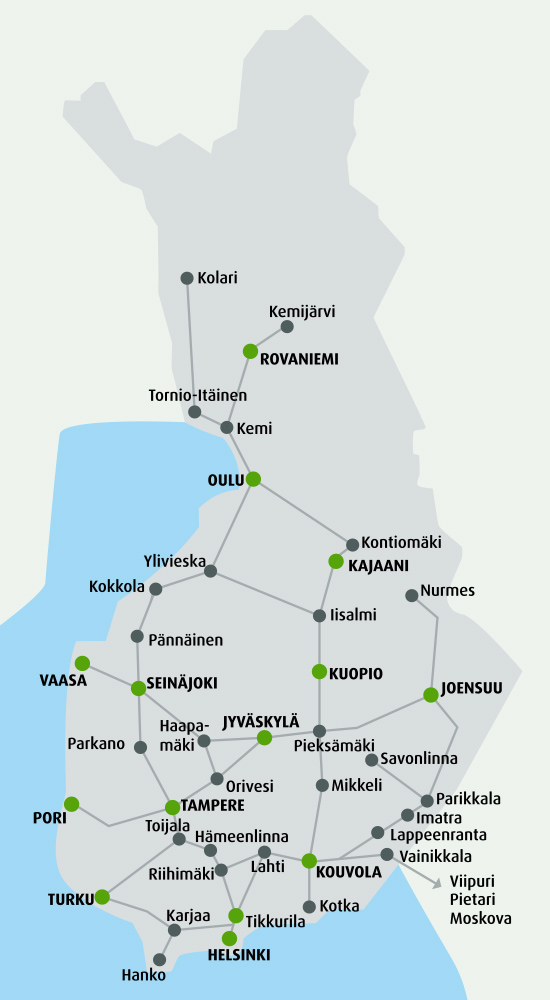
- Second class ("Eco") and first class ("Extra") seats on all trains
- In the economy class, the seats are usually arranged in a row in an open arrangement, with four rows in each row (2+2 rows of seats), most of which are arranged in rows, and only some are arranged in opposite rows.
- In Extra seats, the seats are also arranged in four rows, four in each row (2+2 seats), but the seat spacing is large. Free newspaper, coffee, tea and water
- air conditioning
- Power outlet
- wireless online
- Cars for the disabled, families and children, and passengers with pets
- Bicycle transportation
- The train on the longer route (approximately three hours or more) also transports restaurant cars, where you can buy snacks, drinks and hot dishes. Trains on shorter routes usually only provide mini-bar service.
Helsinki suburban train (Lähijunat)
Lähijunat is a suburban train operating in the Helsinki metropolitan area.

Regional Train (Taajamajunat)
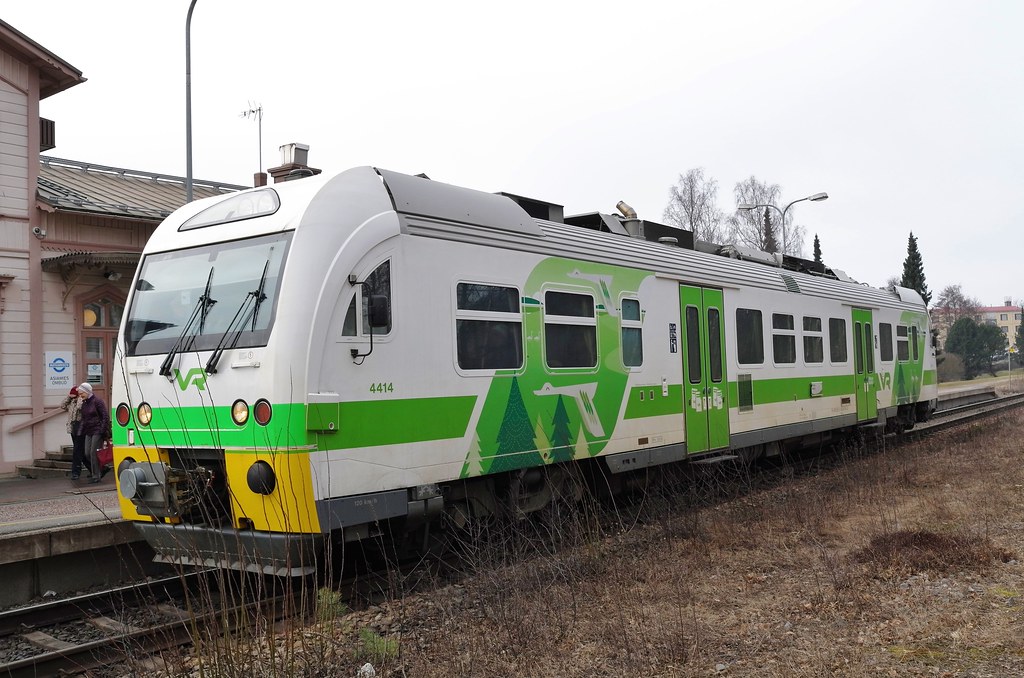
Taajamajunat is a regional train that runs on auxiliary routes across Finland. They are the only trains available on most routes and provide basic services to smaller towns and villages, connecting them to major routes and larger cities.
Most of the lines operated by Taajamajunat are not electrified railways. Use Dm12 diesel rail car.
- Only second class
- Can bring bicycles
- Facilities for the disabled
From Lahti to Kotka is an electrified line.
- Only second class
- Can bring bicycles
- Disabled facilities and air conditioning on Sm4 trains.
Lapland
Finns often drive to Lapland. My family did the same, but then we decided to try the train. We booked a night train with cars because we wanted to explore Lapland on our own as soon as we got there.
Oh, it’s easy to pack things for a week in the trunk of our car, park the car in the carriage, walk to our carriage, and wake up in Lapland the next morning... after that train, I Knowing that I will never drive to Lapland again!
There are several train stations in Lapland: Rovaniemi, Kolari and Kemijärvi.
In Kolari, it is easiest to visit western Lapland. Buses depart from Kolari railway station to Lapland resorts (such as Ylläs and Levi). From Kemijärvi station, you will arrive in eastern Lapland. Rovaniemi is the central hub of Lapland.
The departure time from Helsinki is usually between 7pm and 9pm. The arrival time is in the morning or noon of the last destination.
By the way, the Helsinki-Rovaniemi night train is sometimes called the Santa Claus Express because Rovaniemi is the official hometown of Santa Claus.
Lapland Night Train
There are old and new trains between Lapland and the south. Old models do not have a private toilet in the compartment.
However, the cabin and bed of the old model are slightly larger. Therefore, when we might travel with children, we chose an older model train. Both types of trains have their advantages and disadvantages. Both bathroom facilities are clean and tidy.
Tips
Book early
Remember, all seasons must be booked in advance! Especially in winter, crazy busy! Usually, you can buy night train tickets three to four months before the actual date. If the search fails to get your date, then the ticket has not been published.
Take less luggage
The carriage is comfortable, but big. Use a separate bag to pack overnight necessities only when traveling by train.
The train ticket includes towels, linen and a small kettle. If you are a light sleeper, remember to wear earplugs and eye masks!
Train Types
Boarding
customs
All customs and border checks are done in the car, which is easier than going through the airport! Soon after boarding the bus in Helsinki, the Finnish immigration officer will pass and check your passport and visa information. After crossing the Finnish/Russian border, the Russian officials will pass and check your passport and visa information again. Russian customs officers will come and ask about the items in your luggage. As long as you have all the documents ready, this is a very simple process.
Seat
On your ticket, you will be assigned a transport vehicle and seat number, so make sure to find the correct location. The seat is very comfortable. All trains will have a tray table, but only some trains will have easy-to-use charging sockets.
Food
Snacks and carts often pass by the carriages, offering alcoholic and non-alcoholic beverages, French fries and dried fruit snacks. In addition, there is a dining car for hot food. You can also choose to order and pay for food using an app that can be downloaded on the train.













